Landscaping for Water Draining in Colorado
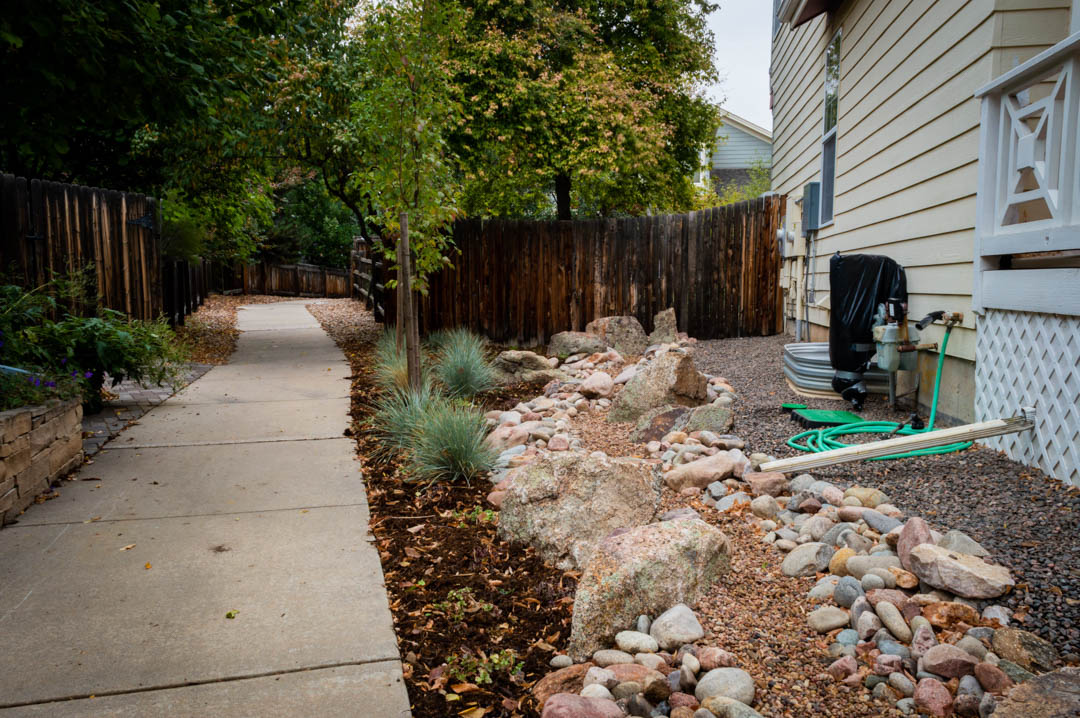
Are you like many Colorado homeowners and businesses who are facing challenges with standing water damaging your grass and plantings? Not only can standing water damage plants it also is a health hazard since it often holds mosquito larvae and other pests so it’s critical you correct any yard draining challenges as soon as they develop.
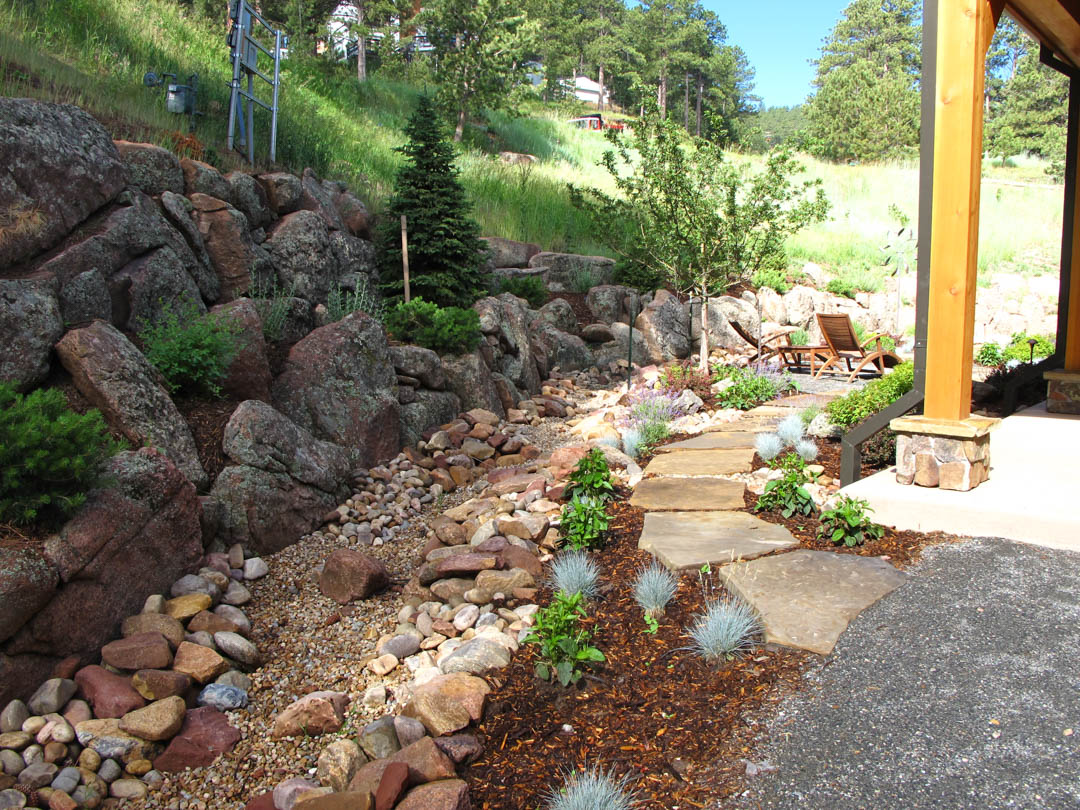
Below we will share some tips for how to improve water draining in your landscaping and around your home or business.
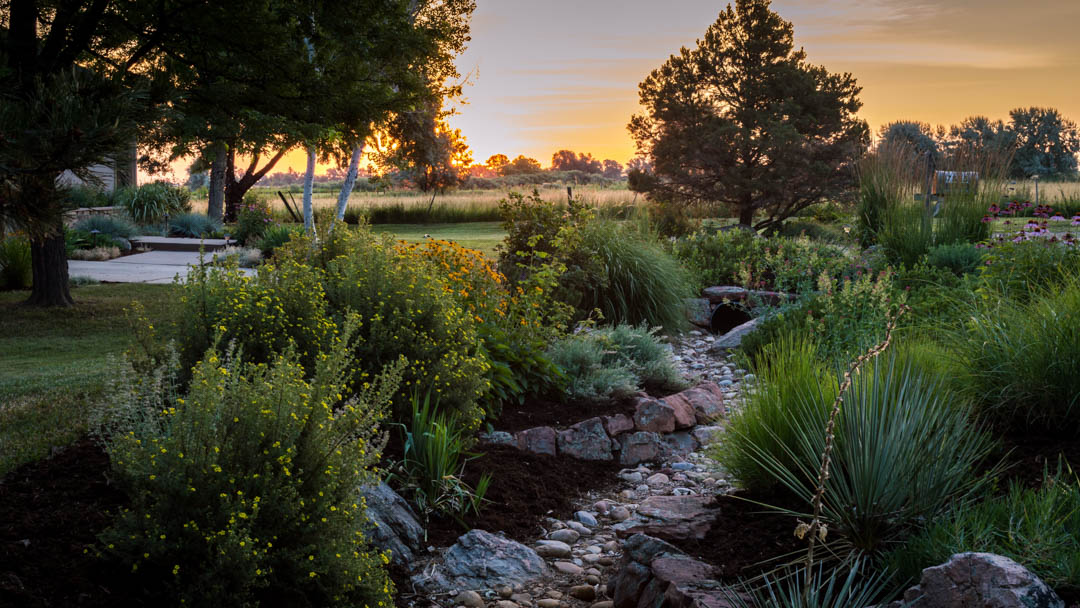
Landscape for Water Drainage in Colorado
When our team partners with you on your Landscape Design we will help turn functional water draining solutions into beautiful landscape enhancements. Creating natural avenues for water such as swales landscaped as dry creeks, allows you to avoid water building up and causing draining challenges by conveying the water away from structures and other problem areas on your property. You can even utilize stormwater runoff to flow into rain gardens full of perennial flowers to create a natural habitat for birds, butterflies, and other helpful species.

We also recommend patios, driveways, and walkways be constructed of pervious paving, such as natural stone or gravel rather than the more traditional solid concrete slab. This allows the water to drain and naturally seep through the material and back into the ground (preventing puddles).
Dry Creek Bed
A dry creek bed can direct water away from a lower spot in your yard or direct runoff into a dry well or rain garden. The goal of a dry creek is to look nice whether wet or dry! Dry creek beds are a great way to create a beautiful landscape aesthetic while also solving drainage problems. Use a dry creek bed to direct water away from a low spot in your yard, pick up stormwater runoff from your gutters or sump pump, or to convey the water that naturally flows on your property after a rain event.
Install A French Drain
A french drain is a versatile system that we recommend for various drainage challenges, specifically when the creation of a swale is not possible due to slope or the location of the needed drainage. A french drain typically collects water from a direct source, such as a downspout or sump pump drain, and disperses that water naturally over a large area of ground through a buried perforated pipe surrounded by gravel. French drain systems can be used alone if the site conditions allow for it, or with a dry well at the end to disperse any water that does not permeate into the ground along the way. Both french drains and dry creeks are very efficient at conveying and dispersing water runoff naturally, the main difference between them being appearance – dry creeks provide a visual aesthetic while french drains are hidden to the eye.
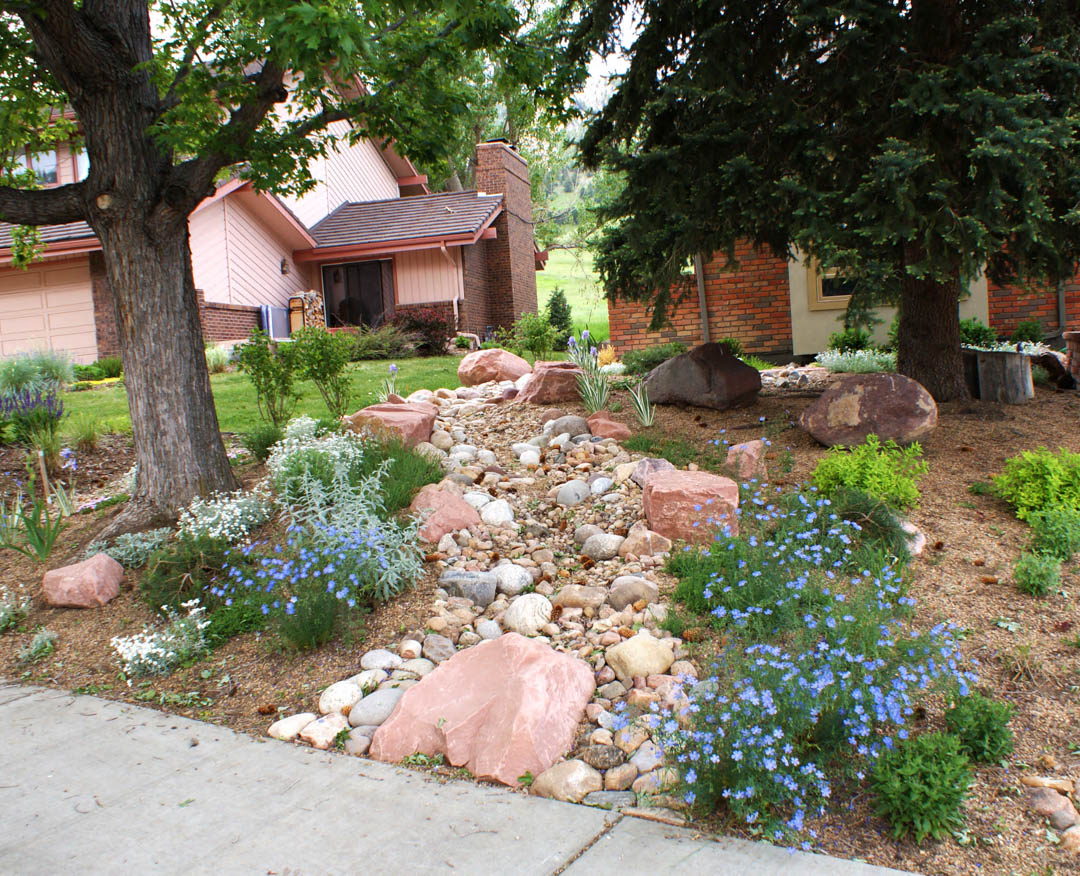
Rain Gardens
Shallow basins planted as flower beds, rain gardens allow water to collect during a rainstorm, then slowly drain back into the soil. Contrary to dry creeks or french drains, whose primary purpose is to redirect the flow of water, rain gardens serve as the final destination. Be sure to use fast-draining soil that encourages water to drain quickly and plants that can handle lots of water along with prolonged periods of drought to promote healthy plant growth. Runoff water may flow into a rain garden from a swale or pipe, or possibly from the natural grade on a site.
Contact LID Landscapes
If you would like to learn more about how LID Landscapes can help with your Site Drainage please visit our website here or give our team a call at 303-440-7833 for a complimentary consultation. We look forward to working with you!








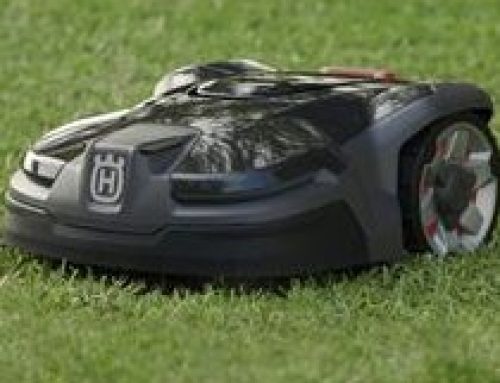
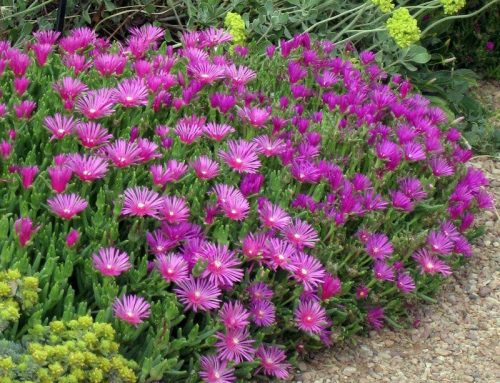
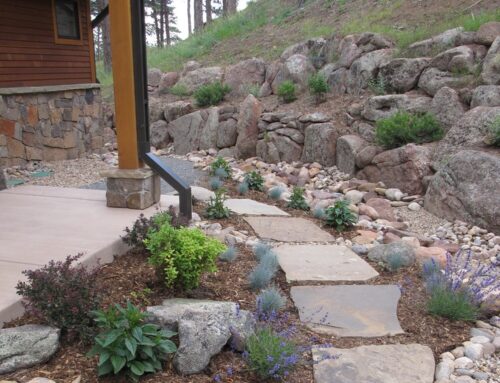
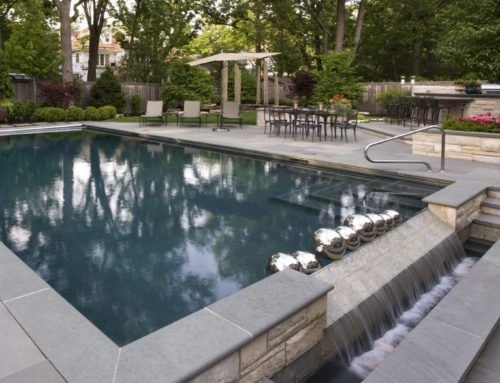
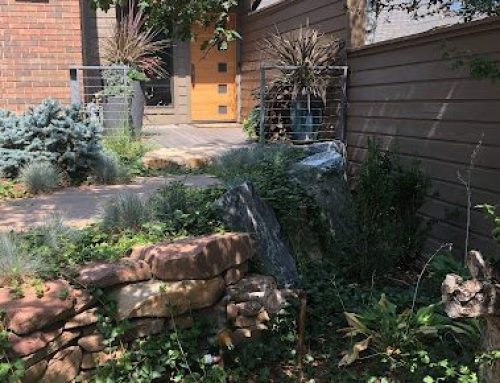
Leave A Comment
You must be logged in to post a comment.